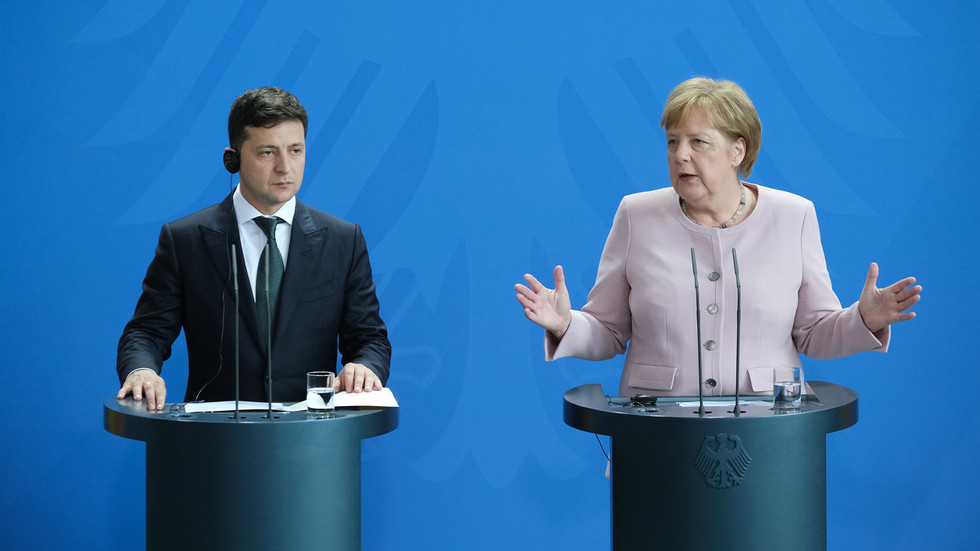It may be just a small little detail, but it may manage what the German government hasn't been able to do in the past decade: Invest large-scale in infrastructure.
Since 2011, the country's so-called debt brake has put strict limits on how much fresh borrowing the government can raise annually. It was enshrined in the German constitution in the wake of the 2008 global financial crisis. However, the limit on excessively raising sovereign debt has curtailed investments in schools, bridges, and the transition to more renewable energy.
The law is contentious among the governing coalition of Social Democrats (SPD), the liberal Free Democrats (FDP) and the environmentalist Greens, even though the three-party alliance had convinced parliament to suspend the regulation temporarily during the COVID-19 pandemic and Russia's war in Ukraine.
But German Economy Minister Robert Habeckhas just come up with a scheme that would allow the government to spend on major infrastructure projects without falling foul of the debt-break regulation, which otherwise can only be made undone with the help of the opposition that refuses to play along.
On Friday, a novel mechanism to fund the estimated €20 billion ($21.45 billion) needed for Germany's hydrogen pipeline network passed the last legislative hurdle in Germany's upper house of parliament, the Bundesrat.
 Economy Minister Habeck (R) is traveling the world to source enough hydrogen for the future needs of German industryImage: Marcus Brandt/dpa/picture alliance
Economy Minister Habeck (R) is traveling the world to source enough hydrogen for the future needs of German industryImage: Marcus Brandt/dpa/picture allianceSeed funding for hydrogen expansion
Under the new regulation, the government can earmark seed financing for a funding vehicle that will be tasked with building the hydrogen network. The network itself will be operated by a private enterprise of companies that charge users of the hydrogen network fees that must be in total high enough to cover the building costs until 2055.
According to experts, the plan is in compliance with the debt break because the government expects to profit from the investment. Debt under the scheme would be issued by Germany's public investment bank, KfW, rather than by the federal government itself.
"The financing of the [H2] network is a milestone, and I am therefore very pleased that we managed to draft a good piece of legislation here," said Michael Kruse from the liberal FDP.
The new funding vehicle includes a so-called amortization account, a type of bank account with an overdraft option that allows the government to balance income from fees with costs.
Jens Südekum, an economist at Dusseldorf University, says the novel mechanism will enable the government to subsidize initial surcharges for using the network, making it "cheaper for customers to jump on board." In the later stages of the funding, "usage fees would be higher in order to recoup initial subsidies," he told DW.
Industry officials have welcomed the new funding mechanism, saying it would spread the costs over decades while avoiding high hydrogen grid fees for customers.
 Industry leaders warned investment in H2 technology won't be made if the government cannot guarantee stable supplyImage: Max Brugger/REUTERS
Industry leaders warned investment in H2 technology won't be made if the government cannot guarantee stable supplyImage: Max Brugger/REUTERSWho carries the risks of the hydrogen rollout?
Germany plans to import large volumes of the hydrogen it needs to transform sectors such as industry, rail and air transportation. Molecule prices, however, will depend on production costs in countries such as Namibia or Mexico.
Philip Schnaars, head of regulation research at Cologne's Institute of Energy Economics, stresses that hydrogen prices will eventually determine whether the industry will adopt the fuel in the decades to come. He says the huge H2 volumes needed and the long time it takes to build out infrastructure could create uncertainties about whether the project will be viable.
"We are talking here about a period from today to 2055. It is almost impossible to make valid and solid statements about this period," Schnaars told DW.
The entrepreneurial risk for the enterprise running the pipeline network is huge because the government has reserved the right to abandon the funding vehicle if the project turns out unviable.
"Under the scenario that the hydrogen network will not fly and we're accumulating losses until 2055, who will cover those hypothetical losses?" asked economist Südekum, noting that private investors are expected to cover 25% of the risk under the regulation.
Fossil fuel-free – The future of steel?
A blueprint for infrastructure financing?
Meanwhile, Habeck is planning to use the new financing mechanism to upgrade Germany's ailing infrastructure.
Habeck recently told Die Zeit, a weekly German newspaper, that the country's electricity grid, which is inadequate for Germany's transition to renewable power and requires €300 billion in investment over the next decades, could be funded in a similar fashion.
Jens Südekum can imagine multiple uses for the funding method: "You could use [the mechanism] big-time for housing. [The state] could borrow to build houses, and later on recover the losses [with] the rent income it will receive."
But Kruse of the FDP, the only party in the government coalition staunchly defending the debt-break limit, warns Habeck against using such funding vehicles too extensively.
"If we should get the impression that this mechanism serves as a model for our coalition partners to circumvent the debt brake in other areas, then we will counter these attempts."
Edited by: Uwe Hessler
While you're here: Every Tuesday, DW editors round up what is happening in German politics and society. You can sign up here for the weekly email newsletter Berlin Briefing.

 6 months ago
19
6 months ago
19








